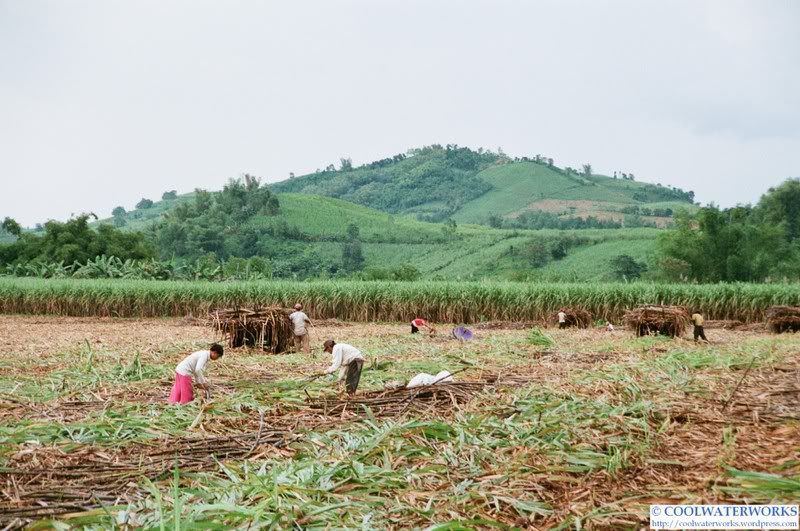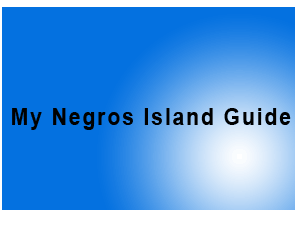- GENERAL INFORMATION
- General Info
- Money
- CITIES/TOWN
- Bacolod City
- Bago City
- Cadiz City
- Escalante City
- Himamaylan City
- Kabankalan City
- La Carlota City
- Sagay City
- San Carlos City
- Silay City
- Sipalay City
- Talisay City
- Victorias City
- Binalbagan
- Calatrava
- Candoni
- Cauayan
- EB Magalona
- Hinigaran
- Hinoba-an
- Ilog
- Isabela
- La Castellana
- Manapla
- Moises Padilla
- Murcia
- Pontevedra
- Pulupandan
- Salvador Benedicto
- San Enrique
- Toboso
- Valladolid

The Ruins
Like a lady wooed by her man, the Ruins play with your emotions especially at sunset with its orange pinks and purples hues. He charms, tickles and romances you. But at sundown, the Ruins take a different persona. With blue and golden sights emanating from nooks and crannies, it is now a lady, teasing, flirting, a temptress confident of her beauty as well as her majesty.

Bacolod …. Fun in the Mountain
Motor to the Hawaiian Philippines Company for some orientation on how the famous muscovado sugar is made. Here, you will have a good understanding of the island’s sugar industry and how it is able to sweeten your day.
Municipality of Isabela

Isabela is a 3rd class municipality in the province of Negros Occidental,
Philippines. According to the 2000 census, it has a population of 48,719 people
in 9,469 households. Isabela is known for BISCOM (Binalbagan Isabela Sugar
Company).
Isabela was known before as a part of Binalbagan when the Spaniard arrived to
the island of Negros. The place was once inhabited by native people with full of
tattoos in the body called “Pintados”. The natives, however, called those
occupying the coastal areas as the “Higuencinas” while those in the upland and
hills were called “Igneines”. Among the early villages in the area of Isabela
was “Tinungan”. During the Spanish occupation of the island when the town of
Himamaylan was founded “Tinungan” was made a visita Parish of Himamaylan and
makeshift chapel of bamboo and nipa and sawali was built there. The site of the
“first church” however, was plague by recurring floods during the rainy days
when the river would overflow. In 1834, the Parish Priest of Himamaylan, Father
Agustin Silva transferred the church Tinongan to another place called “Manacup”,
which is now the present site of the Poblacion of Isabela.
Festivals
Tigkalalag Festival of the Municipality of Isabela celebrated every 2nd day
of November is the most peculiar festival of Negros Occidental.
This is the Isabeleños way of giving respect to the souls of our departed
loved-ones in a form of merry-making and a way of giving recognition to the
super naturals spirits in the third dimensional world which our Filipino
forefathers believed in.
Tigkalalag Festival does not depict pagan rituals but merry-making activity,
unlike in the mid 40’s that children were threatened by their forefathers to be
at home during the Angelus because they might be made as “daga’ or offering to
the sugar mills to appease the spirits living in the “mariit” site.
With the advent of modern technology and science, this festival is considered to
be the past culture and is only reminisced to give recognition to the human and
superhuman forces.
Famous Landmarks
Glory Hill has a cross on top which was built by an American engineer of
Binalbagan-Isabela Sugar Company (BISCOM). The hill is visited by penitents
during the holy week.
Ancestral House of the Miranda Family is a century-old house where bita is
found. The tree bears flowers during the summer and scents permeates throughout
the area.
Century-old Bell is widely considered as the sweetest-sounding bell in all of
Negros in the past.
Lima Lima Falls is 13 kilometers away from the Poblacion. It is said to be the
home of Papa Isio- the acknowledge “pope” of the Babaylanes who fought the
Guardia Sibil during the Spanish period.

